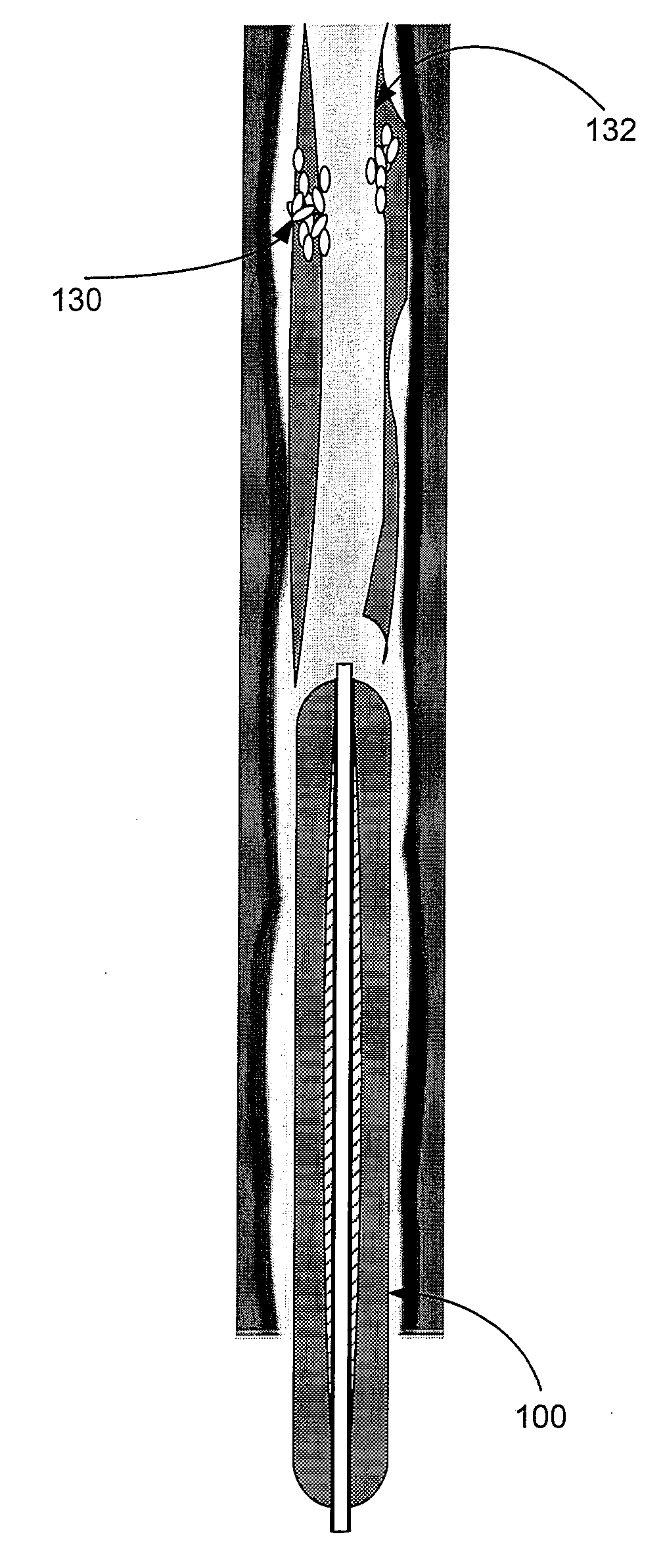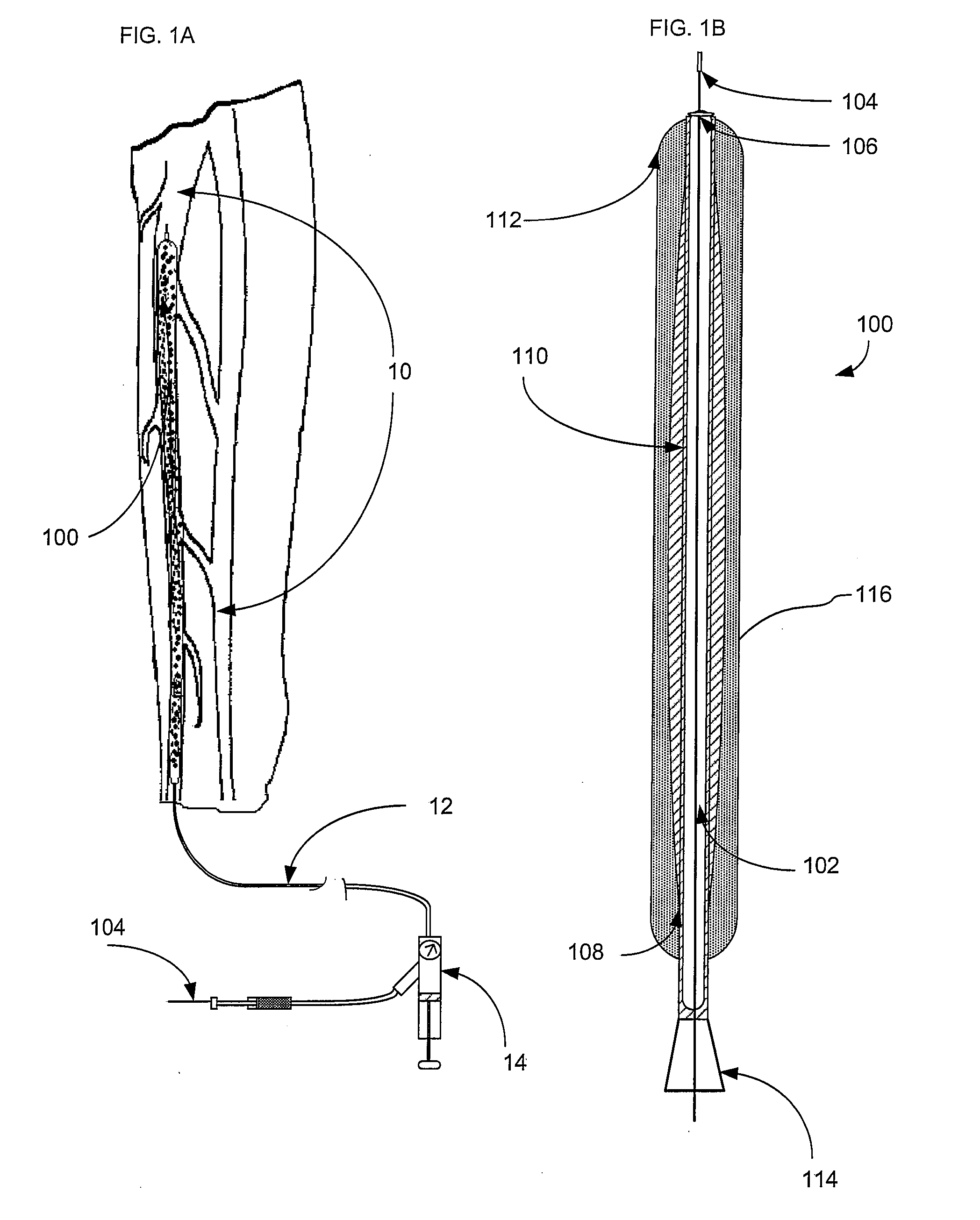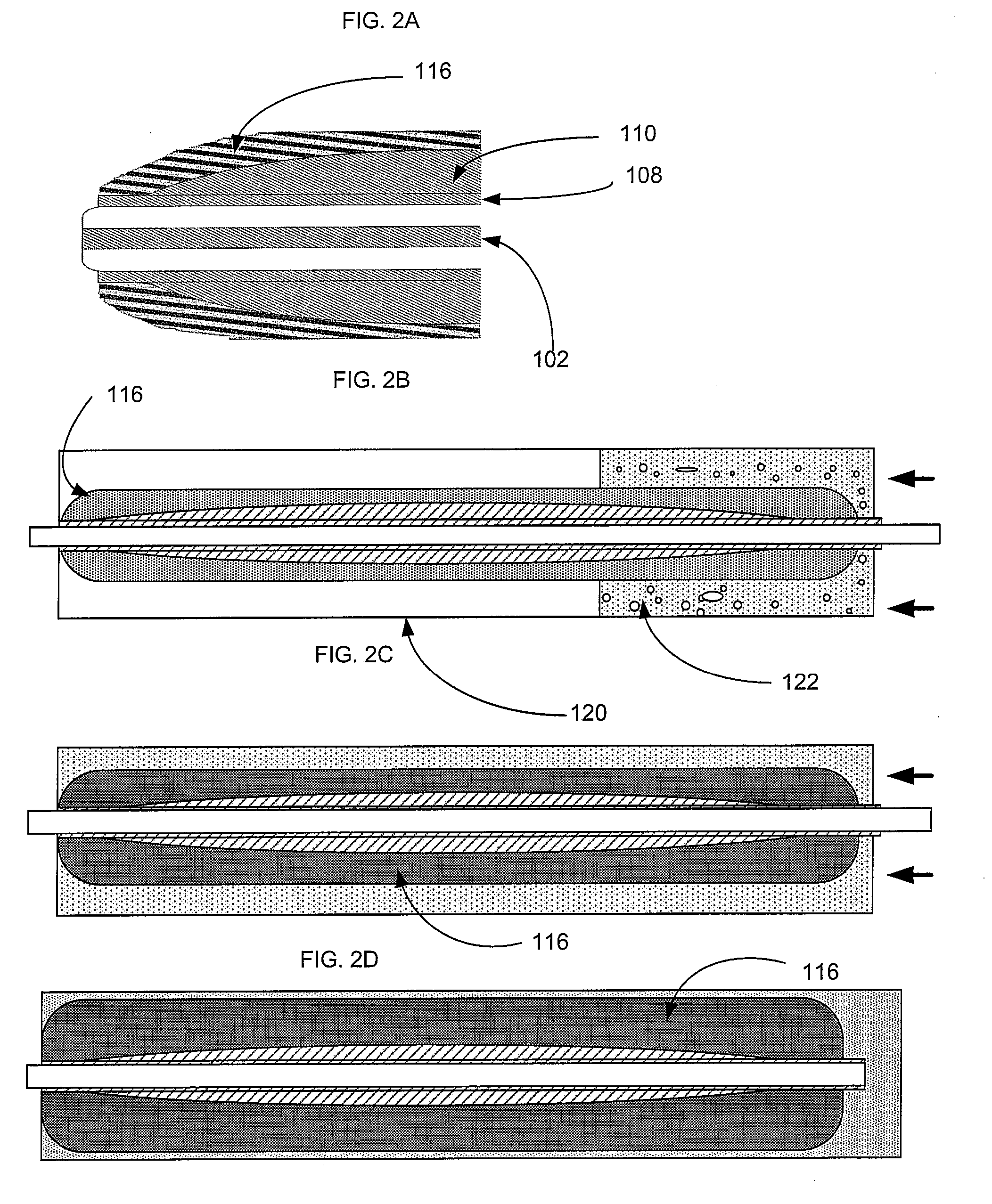Methods and apparatus for treatment of venous insufficiency
- Summary
- Abstract
- Description
- Claims
- Application Information
AI Technical Summary
Benefits of technology
Problems solved by technology
Method used
Image
Examples
Embodiment Construction
[0056]FIG. 1A illustrates an illustrative view of a great saphenous vein 10 in the lower extremity of a patient body with one variation of the catheter treatment system 100 intravascularly positioned therein. The catheter treatment system 100 may be introduced into the patient body via percutaneous access through the patient's skin and into the saphenous vein 10 to be treated at a location distal to the diseased region. The catheter system 100 may be advanced intravascularly through the vein 10 and proximal of the sapheno-femoral junction until the portion to be treated has been reached and / or traversed by the catheter system 10. As further shown, the catheter treatment system 100 may be connected via an inflation / deflation tubular member 12 to a pump 14 positioned externally of the patient.
[0057]Moreover, one or more access ports may be incorporated with the system to allow for access by other devices, such as guidewire 104, which may be optionally advanced distally of the catheter...
PUM
 Login to View More
Login to View More Abstract
Description
Claims
Application Information
 Login to View More
Login to View More - R&D
- Intellectual Property
- Life Sciences
- Materials
- Tech Scout
- Unparalleled Data Quality
- Higher Quality Content
- 60% Fewer Hallucinations
Browse by: Latest US Patents, China's latest patents, Technical Efficacy Thesaurus, Application Domain, Technology Topic, Popular Technical Reports.
© 2025 PatSnap. All rights reserved.Legal|Privacy policy|Modern Slavery Act Transparency Statement|Sitemap|About US| Contact US: help@patsnap.com



